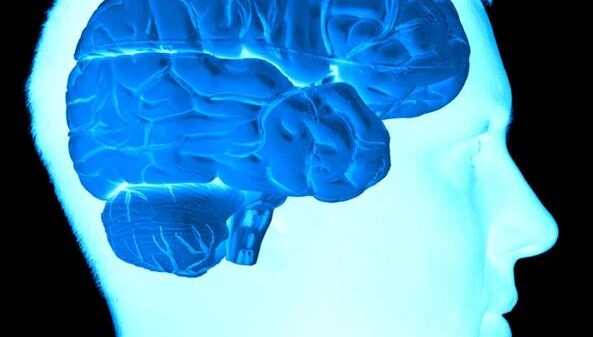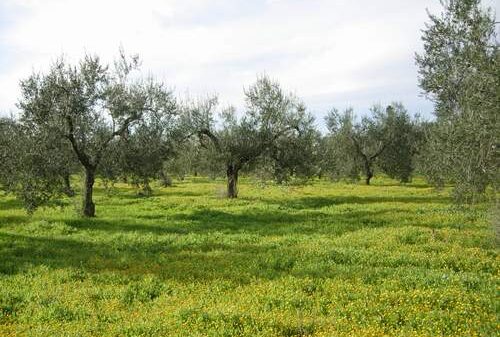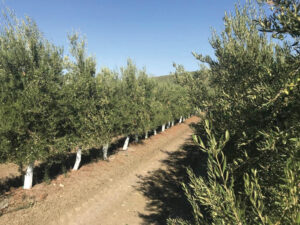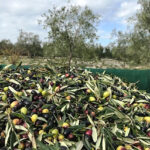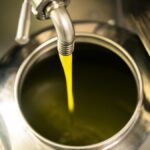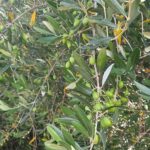 The life of each cell is regulated by various “biological clocks” which control growth and programmed cell death (apoptosis) and the degradation/reuse of damaged or aged cellular components (autophagy).
The life of each cell is regulated by various “biological clocks” which control growth and programmed cell death (apoptosis) and the degradation/reuse of damaged or aged cellular components (autophagy).
Thanks to the contribution of the cell biologist Yoshinori Ohsumi, Nobel Prize winner for medicine in 2016, it was possible to understand the role of autophagy in physiology and his statement at the time of the award was significant: “the human body lives through this process of self-decomposition, which is a form of cannibalism, maintaining a delicate balance between cellular construction and destruction. This is what ultimately characterizes life, continuously recycling and renewing itself to eliminate everything that is damaged or no longer functional".
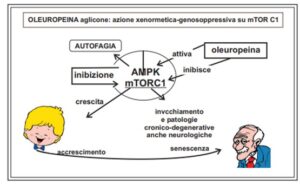
Masaaki Komatsu of the Kominami group (Cell.2007;131:1149–63) demonstrated that alterations in the autophagy process lead to hypertrophy and tumor formation; other authors have indicated that they cause diabetes, m. Parkinson, m. Alzheimer and m. Huntington.
The basis of many neurodegenerative diseases and the formation of abnormal proteinsi (unfolded, misfolded or aggregated) within the cell.
In m. of Parkinson's there is the anomalous accumulation of insoluble protein inclusions inside the neurons, the so-called Lewy bodies, which damage the cells of the dopaminergic area of the brain, the substantia nigra of Sommering.
In 'Alzheimer there are clusters of neurofibrillary tangles of Tau protein and amyloid plaques of β-peptide.
In m. of Huntington there is a mutated protein, huntingtin (polyglutamine) which blocks cell pores and prevents the passage of other molecules.
Following damage, the cell rapidly induces autophagy as a survival mechanism, in an attempt to remove damaged proteins. Autophagy is also induced by deficiency of glucose, nutrients, growth factors, chemical energy (such as ATP, adenosine triphosphate), ischemia, stress and hypoxia.
If the damage is too severe, apoptosis is induced while autophagy becomes a "true" death mechanism when apoptosis does not work. Autophagy intervenes to remove damaged cells or organelles, even in chemotherapy or due to the presence of intracellular pathogens or in the lack of nutrients/growth factors. The time-dependent accumulation of cellular damage is widely accepted as a general cause of aging (i.e. progressive with time).
Cellular damage can occasionally cause aberrant advantages to some cells, which may eventually give rise to cancer. Therefore, cancer and aging can be seen as two different manifestations of the same basic process, i.e. the accumulation of cellular damage.
Cancer cells evolve with multiple strategies to evade apoptosis through genetic mutations or epigenetic modifications.
Defects in apoptosis, autophagy, and necroptosis lead to metastatic progression of tumors. That is, autophagy also has an anti-metastatic role in tumors (Su Z. et Coll. 2015 Mol Cancer. 14:48).
The efficiency of autophagy decreases with age resulting in the accumulation of harmful protein aggregates and damaged mitochondria which lead to the onset of chronic-degenerative diseases, including neurological ones. In the cell there is a complex network of molecules that activate and/or inhibit autophagy; homeostasis depends on the AMPK/mTORC1 signaling pathway.
The mTORC1 gene (Mammalian Target Of Rapamycin Complex 1 = enzymatic protein complex - a protein kinase - is the target of rapamycin in mammals), is responsible for cell growth and survival, reproduction, maturation, protein synthesis, transcription and motility.
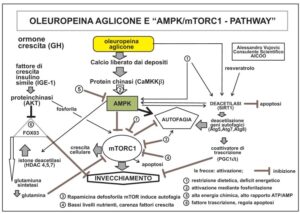
The mTORC1 complex, responsible for growth, inhibits autophagy, which is basically the reverse operation.
After maturity and childbearing age, mTOR becomes inadequate and excessive therefore responsible for cellular hyperproduction, as in some chronic degenerative diseases, present both in aging and in carcinogenesis.
Many authors agree that aging can be considered as a programmed phenomenon driven by the hyperactivity of the mTOR gene (gerogene) and a decline in AMPK (gerosuppressor).
It has been demonstrated, on experimental animals, that mTOR suppression increases lifespan.
This gene has the AMPK gene as a modulator/inhibitor [Adenosine Monophosphate-Activated Protein Kinasand, that is, a protein complex, adenosine monophosphate (AMP)-dependent kinase].
Il AMPK gene it is sensitive to the food energy consumed, basically to the ratio (AMP+ADP/ATP); [AMP = adenosine monophosphate, ADP adenosine diphosphate, APT adenosine triphosphate; ATP>ADP+P> AMP+PP; ATP is a phosphorylated molecule rich in energy, in practice it releases 10,9 Kcal/mol when it passes to AMP].
Homeostasis of the AMPK/mTOR ratio is critical; some conditions improve it such as calorie restriction, fasting and moderate physical activity.
Oleuropein aglycone, with hold in quality olive oil, improve this relationship by a process of x enormousosis (xenos = foreign referring to oleuropein; hormesis is a two-phase response, when the concentration of the molecule is low it determines a stressful, beneficial stimulus, while at high doses it leads to adverse effects).
Taking quality olive oil (EVOO) therefore determines an extremely low intracellular concentration of polyphenols the effect is always beneficial, And is better if consumption is constant over time.
Several studies have demonstrated the protective action of some polyphenols, includingoleuropein aglycone (EVOO), the resveratrol (wine), curcumin, quercetin (onions and capers), genistein (soy), epigallocatechin-gallate (green tea), which can inhibit the accumulation of cell-toxic aggregated proteins such as Tau proteins and β-amyloid peptide deposits, in certain areas of the brain, e.g. in the M. of Alzheimer's.
Oleuropein aglycone has a pleiotropic effect on the induction of autophagy acting on various nuclear mechanisms (more information in fig. 2 Cordero JG 2018) determining among the many activities also the neuroprotective one, on animal models. The latter is determined by the inhibition of the formation of toxic protein aggregates in nervous tissue cells by epigenetically modulating the acetylation of histones bound to DNA but above all by stimulating autophagy through the activation of AMPK, which induces the synthesis of glutamine synthetase, which in turn increases glutamine, a powerful inhibitor of mTORC1.
AMPK acts on numerous transcription factors related to metabolic control and autophagy.
Oleuropein aglycone has an activity capable of increasing, at a molecular level, the AMPK/mTORC1 ratio elevating cytosolic calcium levels from ergastoplasma deposits that activate and phosphorylate the enzyme complex AMPK which inhibits, phosphorylating, mTORC1 resulting in autophagy of harmful protein aggregates.
The gerosuppressive activity of oleuropein on mTORC1 is similar to that of rapamycin. This is an antibiotic isolated from the bacterium present in the soil (Streptomyces hygroscopicus) of Easter Island (Rapa Nui island from which the name derives), capable of suppressing the immune system (it is an immunosuppressant used in organ transplants), antifungal, anti-inflammatory, anticancer and is a powerful inhibitor of the mTOR gerogen capable, therefore , to slow down cellular aging.
It should also be noted that theoleuropein aglycone, contained in EVOO, is represented by an equilibrium of molecules in different tautomeric forms, meaning by this term molecules where the transfer of a proton, the so-called alpha hydrogen, transforms an aldehyde or a ketone into an “enol” (e.g. enolaldehydes, hemiacetals, dialdehydes). Of these forms of oleuropein, the greater anti-aggregating capacity on Tau proteins, demonstrated in vitro, is linked to the aldehyde forms.
The Franco-Belgian research group, directed by Anthony Daccache, reported that in the future these molecules contained in olive oil could be used as drugs in neurodegenerative tauopathies linked to cognitive decline, such as Alzheimer's.
REFERENCES
– Cordero JG et al. 2018. Benefit of Oleuropein Aglycone for Alzheimer's Disease by Promoting Autophagy. Hindawi Oxidative Medicine and Cellular Longevity, Vol. 2018, Article ID 5010741, 12 pages. DOI:org/10.1155/2018/5010741
– Menendez JA et al. 2013. Xenohormetic and anti-aging activity of secoiridoid polyphenols present in extra virgin olive oil: a new family of gerosuppressant agents. Cell Cycle;12 (4):555-78. DOI: 10.4161/cc.23756
– Casamenti F. et al. 2014, Oleuropein Aglycone: A Possible Drug against Degenerative Conditions. In Vivo Evidence of its Effectiveness against Alzheimer's Disease. J. of Alzheimer's Disease; 45, 3, 679-88. DOI: 10.3233/JAD-142850
– Ohsumi Y.2014. Historical landmarks of autophagy research. Cell Research; 24, 9–23 DOI:10.1038/cr.2013.169
– Hasima N. et Coll. 2014. Regulation of autophagy by polyphenolic compounds as a potential therapeutic strategy for cancer. Cell DeathDis; 5:e1509. DOI: 10.1038/cddis.2014.467.
– On Z. et al. 2015, Apoptosis, autophagy, necroptosis, and cancer metastasis. Mol Cancer, 14:48.
– Vujovic A. Olive oil between history and science. 2020, Tozzuolo Editore, Perugia. Chapter 17.28; pages 431-435.
– Vujovic A. on TN 04/2018.
– Daccachea A. et al. 20112, Oleuropein and derivatives from olives as Tau aggregation inhibitors. Neurochemistry Inter. 58; 700–707.
DOI:10.1016/j.neuint.2011.02.010.




